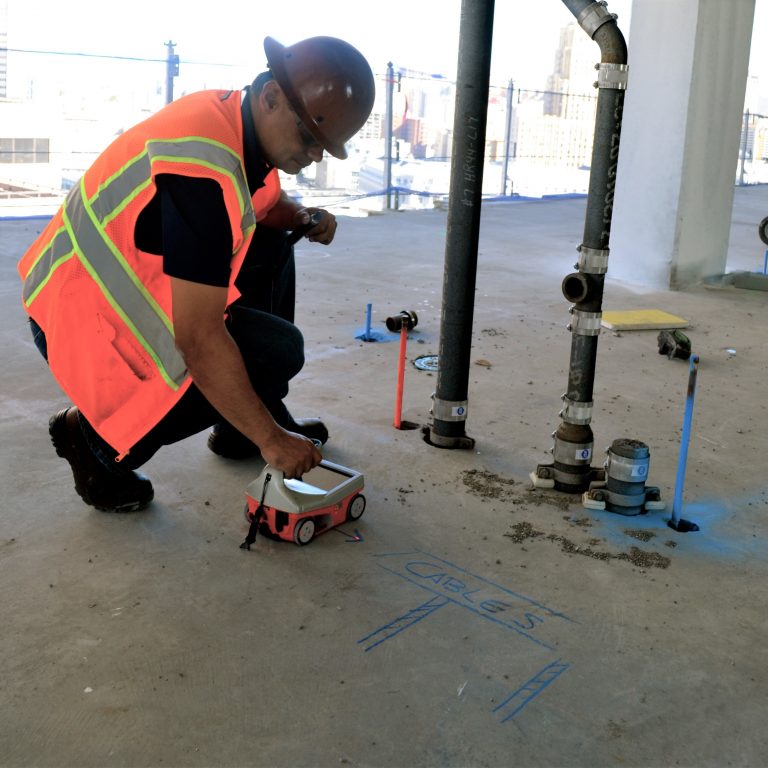Specialist Tips for Optimum Concrete Scanning Outcomes
Specialist Tips for Optimum Concrete Scanning Outcomes
Blog Article
Beyond the Surface: Leveraging Advanced Concrete Scanning Techniques for Unmatched Accuracy and Insight
In the realm of building and construction and infrastructure maintenance, the pursuit for accuracy and thoroughness is never-ending. Advanced concrete scanning strategies have actually become crucial tools in this pursuit, offering a glance under the surface area to reveal a world of essential insights. By using sophisticated innovations, specialists can reveal anomalies, analyze the problem of concrete structures, and make educated choices that shape the training course of jobs. The implications of these strategies prolong much beyond plain surface-level analyses, promising a deepness of accuracy and understanding that is unparalleled.
Relevance of Advanced Concrete Scanning
The importance of making use of advanced concrete scanning methods depends on the unparalleled precision they use for spotting sub-surface anomalies and making certain structural stability. By using cutting-edge innovations such as ground-penetrating radar (GPR), electromagnetic induction, and progressed finder imaging, building and construction professionals can delve underneath the surface area of concrete frameworks with a level of precision that much surpasses conventional assessment techniques. Concrete Scanning. These strategies enable the recognition of surprise risks like rebar rust, spaces, channels, or post-tension wires that could endanger the stability and safety of a structure in time
Additionally, progressed concrete scanning offers indispensable insights into the general problem of a concrete aspect without the requirement for intrusive procedures, lessening the danger of triggering damages during the assessment process. The capacity to identify the exact location and depth of potential issues permits targeted repairs and upkeep, eventually lengthening the life-span of the framework and optimizing its efficiency. In significance, the relevance of innovative concrete scanning can not be overstated in the world of building and construction and framework maintenance, where precision and reliability are extremely important.
Kinds of Cutting-Edge Technologies

Abnormalities and Flaw Discovery

Along with GPR, concrete scanning techniques like thermography and impact-echo screening are additionally efficient in detecting anomalies and problems. Thermography my company makes use of infrared technology to identify variations in surface temperature level, indicating potential areas of worry such as delamination or dampness ingress. On the other hand, impact-echo testing includes examining acoustic reactions to find gaps, splits, and various other issues within the concrete. By leveraging these advanced strategies, professionals can proactively deal with structural issues, making sure the durability and security of concrete frameworks.
Assessing Concrete Problem
Just how can engineers accurately assess the condition of concrete frameworks to ensure their longevity and safety? Analyzing the concrete problem is a vital element of maintaining framework stability. Different sophisticated concrete scanning techniques are employed for this function. Ground-penetrating radar (GPR) is typically used to analyze the interior structure of concrete, detecting voids, Our site splits, and other abnormalities that might endanger its strength. Furthermore, impact-echo screening can provide understandings into the density and stability of concrete elements. Ultrasonic pulse speed testing is an additional useful method for reviewing concrete top quality by determining the rate of acoustic waves via the material.
In addition, visual assessment continues to be a fundamental part of concrete condition analysis. Engineers aesthetically examine the surface for indications of damage, such as spalling, fracturing, or discoloration. Integrating non-destructive screening approaches with aesthetic inspections allows for a detailed examination of concrete problem, enabling engineers to identify potential problems beforehand and apply timely maintenance or repairs. By leveraging these sophisticated methods, engineers can make sure the lasting longevity and safety and security of concrete frameworks.
Enhancing Decision-Making Procedures
In the realm of infrastructure monitoring, maximizing decision-making processes is necessary for making sure the effective upkeep and longevity of concrete frameworks. Boosted decision-making procedures in concrete management include utilizing innovative scanning techniques to collect comprehensive information on the condition of frameworks. By leveraging innovations such as ground-penetrating radar and 3D imaging, stakeholders can make enlightened decisions pertaining to reinforcement, fixing, or replacement techniques.
These progressed scanning techniques supply indispensable understandings into the internal structure of concrete, recognizing potential problems such as gaps, cracks, or corrosion that may not show up on the surface. This level of thorough information permits aggressive upkeep planning, decreasing the danger of architectural failings Source and increasing the overall lifespan of concrete structures.
Additionally, by integrating electronic paperwork and analysis tools right into the decision-making procedure, stakeholders can track the advancement of concrete problems in time, enabling anticipating upkeep techniques and optimizing source allotment. Ultimately, the assimilation of sophisticated concrete scanning techniques enhances decision-making procedures by offering unmatched accuracy, insight, and performance in facilities management.
Conclusion
Finally, progressed concrete scanning techniques provide exceptional accuracy and understanding in discovering anomalies, flaws, and evaluating the condition of concrete structures. By leveraging advanced technologies, decision-making procedures can be boosted, causing even more enlightened and effective remedies for preserving and fixing concrete framework. These techniques play a critical role in making sure the safety and security and durability of concrete frameworks, making them a vital device in the field of building and design.
Moreover, progressed concrete scanning offers indispensable understandings into the overall condition of a concrete aspect without the need for invasive steps, decreasing the threat of creating damage during the evaluation procedure - Concrete Scanning. An additional cutting-edge modern technology is 3D X-ray scanning, which provides detailed images of the internal framework of concrete, providing important information without the need for damaging testing. Furthermore, Concrete Cover Meters are utilized to determine the thickness of concrete cover over reinforcement bars accurately. Enhanced decision-making processes in concrete monitoring entail making use of advanced scanning methods to gather thorough information on the condition of structures.In conclusion, advanced concrete scanning strategies supply unmatched precision and understanding in finding anomalies, flaws, and analyzing the problem of concrete structures
Report this page